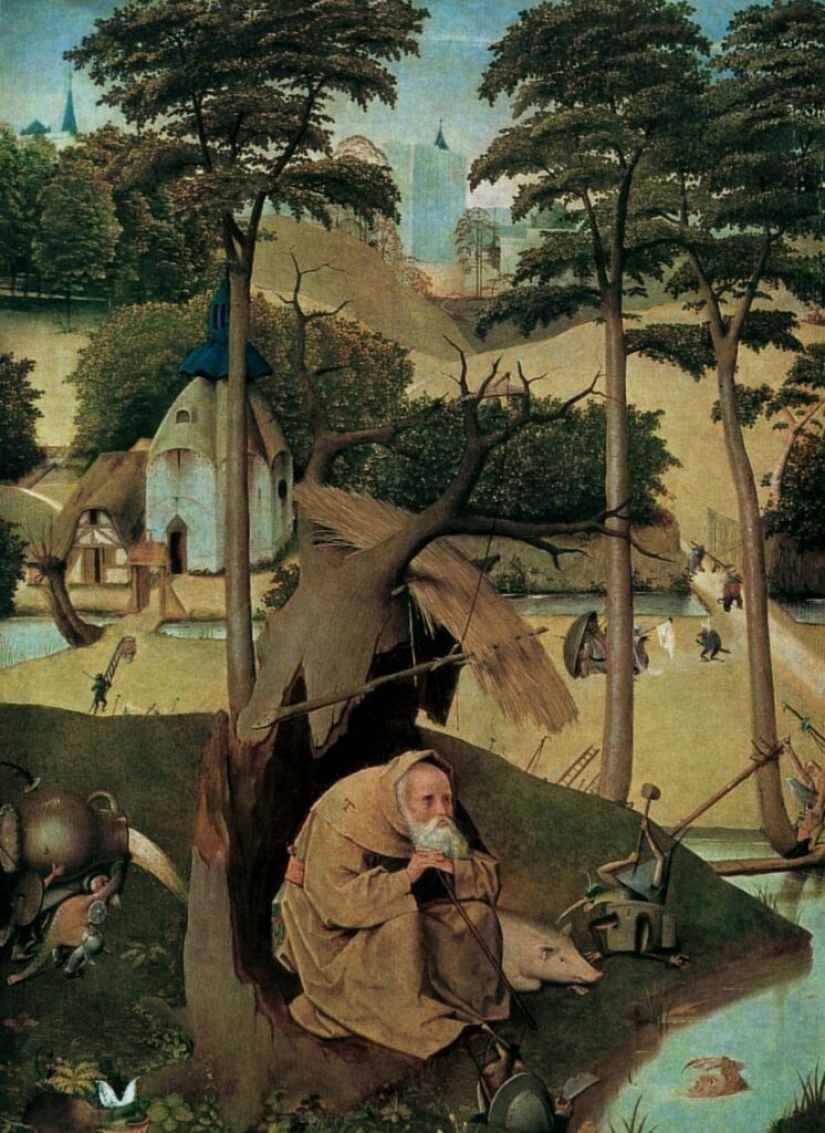How nuns struggled with attraction to men
Categories: History
By Pictolic https://pictolic.com/article/how-nuns-struggled-with-attraction-to-men.htmlSuch a phenomenon as monasticism exists in many world religions. The way of life of monks and nuns implies selfless service to their deity and self-denial. People who choose this path leave the mundane life and even change their name. They settle in monasteries or temples and strictly observe their vows, among which the most important are the rejection of the pleasures and temptations of the imperfect world. But even the strongest faith does not cancel human physiology. The struggle with attraction to the opposite sex is one of the most important moments in the life of monks.

Monasticism appeared in Asia thousands of years ago and for a long time was inextricably linked with Buddhism. This religion itself originated among wandering ascetics who were alien to human weaknesses. These ascetics in the 4th — 5th centuries BC became the teachers of Gautama Buddha, the founder of Buddhism.

The lifestyle of ascetics, who can be considered the first monks, was very specific. They settled in forests and mountains near towns and cities in huts, dugouts or caves. There were also wandering monks who constantly moved from one settlement to another. They ate alms from kind-hearted citizens. They paid for their generosity and compassion with their wisdom. Ascetics gave people advice, comforted them in their sorrows and guided them on the path of Dharma.

When Buddhism was born, many of the ascetics converted to this religion. But Buddhist monks differ from Christian ones in their principles. They live separately from everyone, but they do not shy away from people, but, on the contrary, bring them knowledge and comfort. There are also Buddhist nuns who also adhere to strict vows.
Classical monasticism in the form in which it is understood in the West is connected with Christianity. It is believed that the first Christian monks appeared in the 3rd — 4th centuries AD. But there is an opinion that some ascetics lived in Syria and Egypt much earlier. According to the official version of the Christian Church, the first monk was the Egyptian Anthony the Great, who is also known as St. Anthony.

This elder lived in very difficult conditions, in the desert. Because of this, Anthony and his followers began to be called hermits. These hermits had to fight both the forces of nature and their own temptations. Anthony the Great himself was so renounced from the world that he left the community of his disciples. He considered that the cult of veneration that appeared around him was dangerous for the man of God, as it sowed pride.

In 323, the first Christian monastery was founded in Egypt. It was inhabited by 40 men, led by a former Roman legionary Pachomius. Later, monasticism came to Byzantium, and from there spread throughout Europe. There have always been a large number of monasteries in Greece. The word "monk" itself comes from the Greek "μόνος" — one, a loner.
It was very important for the monks to restrain themselves from the temptation to communicate with the opposite sex. This condition was especially strictly observed in female monasteries. In the Middle Ages, nuns who were caught in a "lack of faith" were quickly subdued by hard work. They were forced to do the hardest, often meaningless work, which led to despair.

Fatigue and humiliation were supposed to distract the woman from sinful thoughts and bring her back to God. But that wasn't the worst part. Those who persisted were clothed in chains. These were heavy long chains that were wrapped around the body of the disobedient. With any movement, the chains pressed and rubbed the skin, causing severe suffering to the nun. This was to eradicate any thoughts associated with the opposite sex.

Sometimes the nuns themselves tried to rid themselves of sinful thoughts. They were engaged in self-torture, coming up with very sophisticated and cruel ways. Most often, self-flagellation was practiced with a whip, when a woman herself flogged herself on her naked back until she bled. Also in use were hair shirts — long coarse shirts made of goat's wool. The contact of the hair shirt with the body caused unbearable itching and it was believed that this distracts from worldly temptations.
But the most effective way to combat carnal temptations was the lifestyle of nuns. Monasteries for women were stricter than those for men. They were located in remote places, were often surrounded by a wall and access to men except for the clergy was prohibited. Often the nuns had not seen strangers for years, so the likelihood of falling into carnal sin was minimal.

In the modern world, nuns are no longer forcibly kept in monasteries. They can go out on their own business and communicate with the laity. But strict rules still apply, violation of which entails expulsion from the monastery. They relate to clothing, a ban on attending entertainment events, wearing jewelry, using cosmetics and much more.

All these prohibitions, together with constant prayers, greatly affect women. Some can't stand it and leave the monasteries. But many gradually develop submission and themselves no longer see men as sexual objects. There are also women who go to a monastery after a stormy social life, as did Ann Russell Miller, a socialite and millionaire.
Recent articles

Most of us loved as kids magic tricks, but someone loves them right now. However, the attitude to the hoax became a few others ...

Everything is changing. This is well and has long been known to everyone. But when something stays with you for a long time, it is ...

Compared to the 1970-ies 1980‑e years were a time of cautious optimism in new York. Boom on wall street fueled the speculative ...